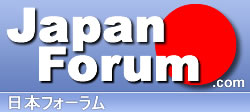
 |
What's different
I'm really new to learning Japanese and I was wondering what's the difference between Hiragana, Katakana, and Kanji?
|
Kanji: These are pretty much the Chinese characters. A character can represent a word, like the kanji character 光 (Hikari) means light.
Hiragana: This is the Japanese alphabet. Hiragana is pretty much used for words that don't have a kanji character. Hiragana is also only used for Japanese words. Let's say you knew the word for "light" was "hikari", but didn't know the kanji. It would be written in Hiragana as ひかり. Katakana: This alphabet is pretty much used for sounds and words foreign to Japanese. Like my name is Wendy, but since it's not a native Japanese, it would be written Uendei in Katakana as ウエンデイ as opposed to うえんでい (Hiragana). Edit: That's the best as I can explain it. Maybe someone else can do a better job. |
Think of Kanji and Hiragana as regular "box" (or print) letters in English, and Katakana are Italics. We use italics to show that the word is forgeign to the English language.
Kanji can be read either by meaning or by sound. This gets kind of confusing, but you won't need to worry about Kanji for some time now if you're just starting. Hiragana is the one you want to learn first. It (and Katakana) are both phonetic--each symbol represents a sound. More accurately, they're syllabic, as each symbol is a full syllable (or mora in Japanese, if I recall correctly). On the other hand, if you're planning to travel to Japan sometime very soon, I'd recommend you learn Katakana first--I've read that Katakana is the survival tool for any Western gaijin in Japan that can't speak the language due to its being used on restaurant menus and the like. |
Thank you so much for your help and someone told me about japanese.about.com earlier and I already learned ten hiragana. YAY ~<3
|
| All times are GMT. The time now is 08:20 AM. |